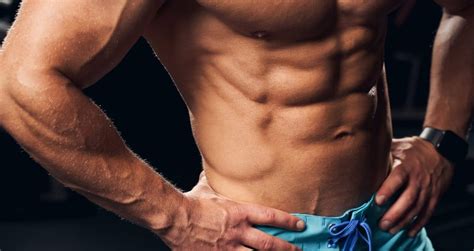Understanding Stubborn Belly Fat in Men
Belly fat, particularly the visceral kind that surrounds organs, is a common concern for many men. It’s not just an aesthetic issue; excessive abdominal fat is linked to various health problems, including heart disease, type 2 diabetes, and certain cancers. Often, this fat can be particularly stubborn due to hormonal factors, genetics, and lifestyle habits. Tackling it requires a comprehensive and consistent approach that integrates specific dietary changes and effective workout routines.

The Diet Blueprint for Belly Fat Loss
Losing belly fat starts in the kitchen. No amount of crunches will compensate for a poor diet. The fundamental principle is creating a calorie deficit, meaning you consume fewer calories than your body burns. However, the quality of those calories is just as crucial.
Prioritize Protein
Protein is king when it comes to fat loss. It helps you feel full longer, reduces overall calorie intake, and is vital for preserving muscle mass during weight loss. Aim for lean protein sources like chicken breast, turkey, fish, eggs, and lean beef. Protein also has a higher thermic effect, meaning your body burns more calories digesting it.
Embrace Healthy Fats
Don’t be afraid of fats, but choose them wisely. Healthy fats from sources like avocados, nuts, seeds, and olive oil are crucial for hormone production, satiety, and overall health. They help regulate appetite and support metabolic functions, which are key to sustained fat loss.
Smart Carb Choices
Focus on complex carbohydrates rich in fiber, such as whole grains (oats, quinoa, brown rice), fruits, and vegetables. These provide sustained energy, help with digestion, and keep blood sugar levels stable, preventing energy crashes and cravings. Drastically reduce or eliminate refined sugars, sugary drinks, and highly processed foods, which are major contributors to belly fat.
Hydration and Micronutrients
Drink plenty of water throughout the day. Water aids metabolism, helps with satiety, and is essential for all bodily functions. Ensure your diet is rich in micronutrients (vitamins and minerals) from a wide variety of fruits and vegetables to support optimal health and energy levels.

Workout Strategies to Blast Belly Fat
While diet is paramount, exercise plays a critical role in accelerating fat loss, building muscle, and improving overall body composition. A balanced workout regimen should include a mix of high-intensity interval training, strength training, and consistent cardio.
High-Intensity Interval Training (HIIT)
HIIT involves short bursts of intense anaerobic exercise followed by brief recovery periods. This type of training is incredibly effective for burning calories both during and after the workout (the ‘afterburn effect’) and has been shown to be particularly good at targeting belly fat. Examples include sprints, burpees, battle ropes, or cycling at high intensity for 30-60 seconds, followed by 30-60 seconds of rest, repeated for 15-20 minutes.
Strength Training is Non-Negotiable
Building muscle is crucial for fat loss. Muscle tissue burns more calories at rest than fat tissue, meaning more muscle equals a faster metabolism. Focus on compound exercises that work multiple muscle groups simultaneously, such as squats, deadlifts, bench presses, overhead presses, and rows. Aim for 3-4 strength training sessions per week.
Consistent Cardio (LISS)
While HIIT is great, don’t neglect steady-state cardio (Low-Intensity Steady State). Activities like brisk walking, jogging, swimming, or cycling for 30-60 minutes at a moderate pace, 2-3 times a week, contribute to overall calorie expenditure, improve cardiovascular health, and help manage stress.
Targeted Core Work (Not Just Crunches)
While spot reduction isn’t possible, strengthening your core is vital for overall fitness and a well-defined midsection. Incorporate exercises that work the entire core, not just the rectus abdominis. Think planks, side planks, Russian twists, leg raises, and stability ball exercises. Remember, these build the muscle, but diet reveals it.

Lifestyle Factors Beyond Diet and Exercise
Losing stubborn belly fat isn’t just about what you eat and how you move; lifestyle factors play a significant role.
Sleep Quality
Lack of sufficient, quality sleep disrupts hormones that regulate appetite (ghrelin and leptin) and increases cortisol levels. Elevated cortisol is directly linked to increased visceral fat storage. Aim for 7-9 hours of quality sleep per night.
Stress Management
Chronic stress also leads to elevated cortisol, prompting your body to store fat around the abdomen. Implement stress-reducing techniques such as meditation, yoga, hobbies, or spending time in nature.

Putting It All Together: Consistency is Key
Losing stubborn belly fat is a journey, not a sprint. It requires patience, discipline, and consistency across all areas of your life. There’s no magic pill or quick fix. By combining a protein-rich, whole-food-focused diet with a diverse workout regimen of strength training, HIIT, and cardio, alongside adequate sleep and stress management, you’ll create the optimal environment for your body to shed that stubborn belly fat. Stay consistent, track your progress, and celebrate the small victories along the way.





